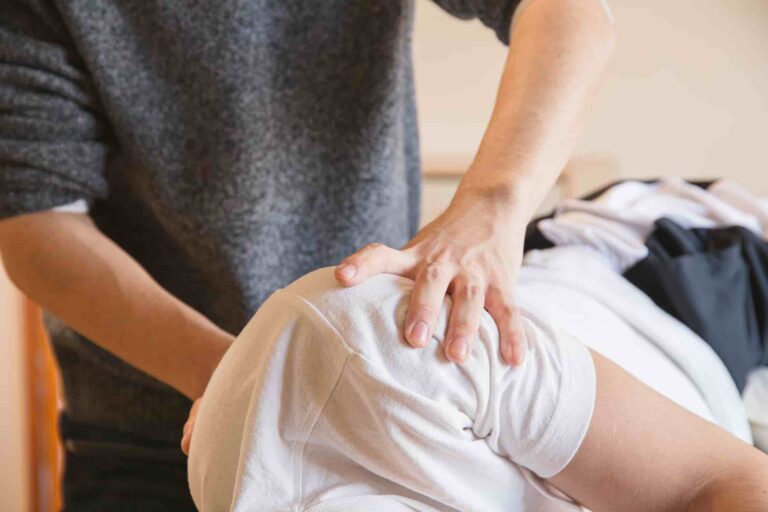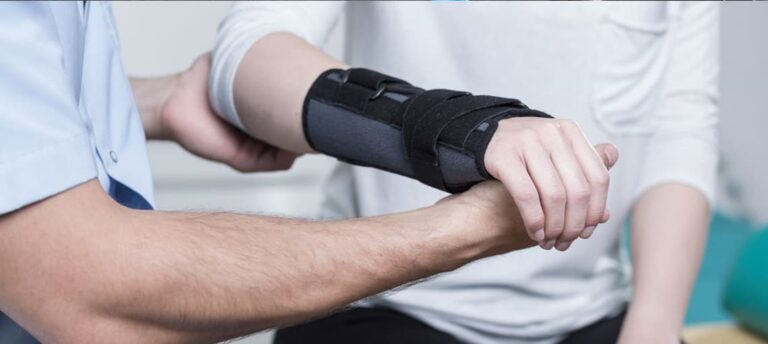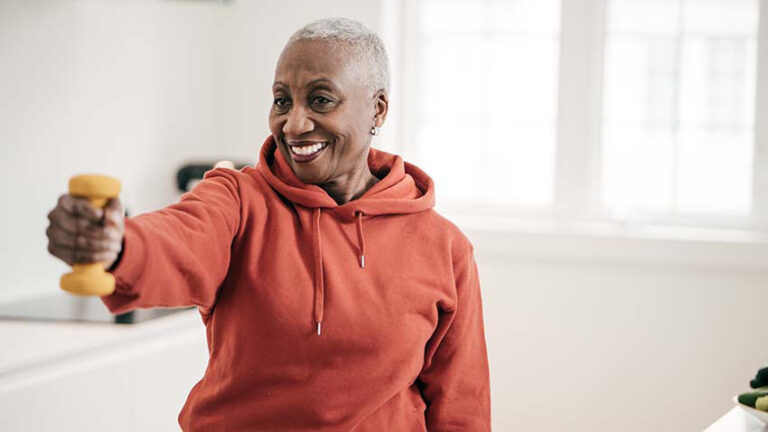Diastasis recti abdominis (DRA) is an injury characterized by increased rectal-ventral midline separation due to widening and thinning the rectus abdominis (LA). This separation results in an increase in the rectus ventral distance commonly referred to as the rectal distance (IRD). Here we will discuss the complete process that how you can do physiotherapy for diastasis recti.
DRA can occur in men, women, and people of all ages. In infants, recto-abdominal separation may be congenital due to the abnormal arrangement of fibers in LA, or it may be due to decreased activity of the abdominal muscles.
In men, aging, significant fluctuations in weight, an excessive increase in intra-abdominal pressure (IAP) caused by weight lifting, and hereditary muscle weakness are risk factors for developing DRA. DRA is the most common, highly prevalent disease among pregnant women and postpartum women, which can be explained by uterine dilation to adapt to the growth of the fetus.
Dilation of the uterus elongates the straight abdomen and changes the angle of attachment to it, and this, combined with the hormonal elasticity of the connective tissue, causes the LA to expand, which leads to increased IRD, displacement of the abdominal organs, and distention of the abdominal wall.
During birth, by half-quarter of pregnancy, 33% of women had IRD rises, and by the second quarter, 100% had IRD rises.
Physiotherapy for Diastasis Recti
The physical therapy for ectopic proctology varies from individual to individual, depending on your specific needs and goals. Possible physical therapy treatments may include customized exercise programs, including strengthening and stretching exercises, ice (ice) therapy, and electrical therapy (such as ultrasound). Other treatments include
Core Stability Exercises
Cardiac muscles include your belly, your back, your pelvic muscles, and your hip muscles that function together to ensure safe and shifting positions. They act as braces around the torso and are very important because all the other movements are created from here. Core stabilisation drills are meant to improve muscles’ strength and performance.
Benefits
- Shrinking pain.
- Posture changed.
- Improved movement control.
- Supports the natural motion.
- Improved muscle performance.
- Lower back pain minimized.
- Minimized imbalance of the muscles.
- Improved spine and pelvic stability.
- Increased strength and endurance of the muscles.
- Increased alignment and equilibrium.
Muscle spasm minimized.
Patient Education
It is important to educate our patients about diarrhea during pregnancy and pregnancy in order to control patient expectations, reduce fear and anxiety, and better prepare patients for childbirth-related changes.
Motta and colleagues (2015) suggested that 100% of women in the second trimester of pregnancy have a high incidence of IRD, manifested by DRA.
These statistical data and DRA language (such as “gap” and “disconnection”) may cause significant fear and may increase patient anxiety and anxiety, which may have negative physical and psychological effects on mothers and children.
Therefore, it is important to remind patients who are trying to conceive and who are already pregnant that a woman’s body is carefully designed to adapt to the growth and expansion of the developing fetus. Hormonal changes during pregnancy can relax and soften connective tissue, which may cause Los Angeles to expand and create space for the baby.
Checkout our article on broken wrist physical therapy that we’ve previous wrote.
Abdominal Supports
Although researchers recommend that external support (such as abdominal ligation) is not recommended as the main rehabilitation method for DRA to avoid dependence, in some cases, a combination of exercise may be beneficial.
For example, abdominal banding can provide more support and comfort, can provide women with stimuli and proprioception in the early postpartum period, and can increase patient confidence when trying to stimulate or contract the abdominal muscles.
A randomized controlled trial by Cheifetz and colleagues (2010) demonstrated that abdominal support could effectively resolve distress after major abdominal surgery and improve patient experience, which may be related to DRA patients who recovered from cesarean delivery.
Some clinical experts suggest that inflexible adhesives increase the likelihood of pressure inside the bladder (IVP) or urine pressure in the bladder. It should be remembered that elastic adhesives are more likely to encourage a recovery than nonelastic adhesives when abdominal adhesives are administered or recommended. Additionally, flexible wraps can make movement larger and less likely to restrict breathing.
Exercises for the Inner Unit
A consensus study by Dufour and colleagues (2019) confirmed the use of indoor unit movement for DRA management before, during, and after birth. This is in line with Mesquite and his colleagues’ analysis (1999). Who proposed an internal preparation right after birth?
Likewise, a recent study by Thabit and Shahri (2019) concluded that a program of basic deep stabilization exercises (such as diaphragm muscle breathing, pelvic floor contraction, plank contracture, and isometric abdominal contraction) could effectively treat DRA and improve quality of life after childbirth.
The heart is strengthened by inner muscles like the abdominal cross muscles, the multilateral muscles, diaphragm muscles, and pelvic floor muscles. When starting an indoor unit exercise, you must first confirm the controlled isolation of each muscle in the unit and then control the joint activation of the indoor unit.
When trying to control indoor units before birth, early postpartum, and postpartum, it is important to remember that exercises that involve the superficial abdominal muscles (i.e., sitting) should be avoided. Once isolation of indoor units is achieved, exercises should be conducted to include outdoor units and more function-based exercises.
Transverse Abdominis (TA)
First, position yourself in a curved or neutral spine position. Once in the correct position, the patient is asked to palpate their TA muscles using their index and middle fingers on the anterior pelvic bone (or ASIS). Next, let the individual pull the abdomen and contract the TA muscles while breathing comfortably.
The following tips can be used to isolate the transverse abdominal muscles: “Imagine pulling the pelvic bones together in a straight line” or “Pull the belly button toward the spine.” The individual should maintain the contraction for 3-5 seconds upon exhalation and relax the TA upon inhalation. Individuals can do three sets of 10 repetitions 3-4 times a week each.
Ensure that there are no compensation strategies in place, such as tilting the pelvis back, sunken chest, holding your breath, or raising the abdomen.
Multifidus
When the individual lies on their back or side with a neutral spine, let them visualize a line connecting the left and right sides of the posterior pelvis. Next, ask the individual to shrink their debris and try to place the left and right halves together along this line.
Individuals should practice restful breathing to ensure that the overgrowth of the fungus is absorbed upon exhalation. The shrinkage should be maintained for 3-5 seconds, three times a week, ten times each time, 3-4 times each time.
A forward tilt of the pelvis, bending of the hips, and movement of the chest and lower back should not be noted.
Pelvic Floor Muscle
When lying on your back or on your side, ask the patient to imagine closing the urethra as if he was trying to stop the flow of urine. Or, let the individual imagine raising the anus to the pubic bone. As suggested by Diane Lee (2019), another way to isolate PFM is to sit on a small softball because the ball can help provide feedback to your brain.
Individuals should aspirate as the PFM contracts, ensuring that the anterior, posterior, and lateral portion of the lower rib cage is enlarged. During exhalation, individuals should relax the pelvic floor. The shrinkage should be maintained for 3-5 seconds, three times a week, ten times each time, 3-4 times each time. During this exercise, the individual should not feel any tension in the abdomen, and he should not feel tight hips or spine movements.
Conclusion
Here you will find everything that you need to know about Physiotherapy for diastasis recti. We have talked about this treatment and also what are the benefits of this therapy. So if you are also feeling symptoms of this illness, then this therapy will be the best option for you.





